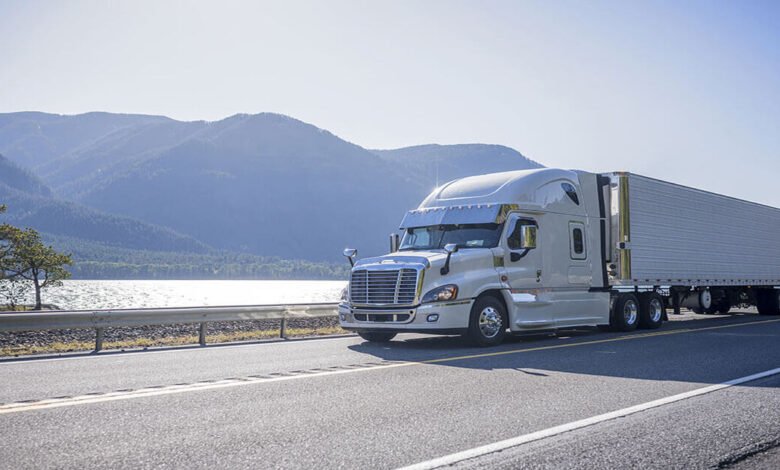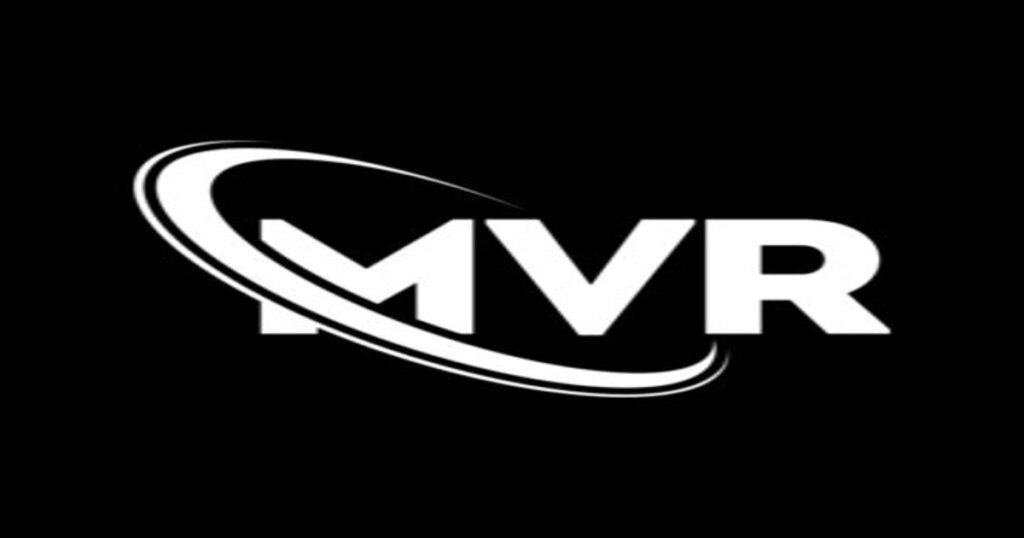How to Start a Hotshot Trucking Business in 2024 Comprehensive Guide

Hotshot trucking business, also known as expedited freight, is a niche segment in transportation characterized by rapid delivery of smaller loads. It utilizes smaller vehicles like pickups or flatbed trucks for quick response times. Despite its advantages of speed and versatility, challenges like tight schedules and fluctuating fuel prices exist. However, with growing demand hotshot trucking driven by factors like just-in-time deliveries and e-commerce growth, entrepreneurs see opportunities. Truck freight size selection involves considering factors such as load size, delivery schedule, and cost efficiency. Registering a trucking business involves choosing a structure, naming, obtaining permits, and ensuring regulatory compliance.
What is Hotshot Trucking.
Hotshot trucking also known as expedited freight refers to a niche segment within the transportation industry characterized by the rapid delivery of smaller loads. Here’s a brief overview of what hot shot trucking entails
Definition: Hot shot trucking business involves the transportation of smaller time-sensitive loads that are typically too small for traditional freight carriers to handle efficiently.
Truck Type: Hot shot trucking business often utilizes smaller vehicles such as pickups flatbed trucks or even gooseneck trailers. These vehicles are well-suited for quick pickups and deliveries allowing for faster response times compared to larger semi-trucks.
Speed and Efficiency: One of the key advantages of hot shot trucking is its speed and efficiency. With fewer bureaucratic hurdles and smaller loads hot shot carriers can often provide quicker delivery times compared to traditional freight services.
Versatility: Hot shot trucking is highly versatile and can cater to a wide range of industries and needs. From delivering urgent automotive parts to transporting construction materials to remote job sites hot shot carriers play a crucial role in keeping various trucking businesses running smoothly.
Challenges: Despite its advantages hot shot trucking also comes with its own set of challenges. Tight delivery schedules fluctuating fuel prices and the need for efficient route planning are just a few factors that hot shot carriers must navigate to ensure successful deliveries.
Growing Demand: In recent years the demand for hot shot trucking services has been on the rise driven by factors such as the increasing need for just-in-time deliveries and the growth of e-commerce. As a result, many entrepreneurs are entering the hot shot trucking industry to capitalize on these opportunities.
In essence hot shot trucking offers a specialized transportation solution for businesses that require fast and reliable delivery of smaller loads. With its focus on speed efficiency and versatility hot shot trucking plays a vital role in today’s fast-paced logistics landscape.
Select Your Truck Freight Size.
Choosing the appropriate truck freight size is a critical decision for businesses involved in transportation and logistics. Here’s a breakdown of factors to consider when selecting the size of your truck freight:
Load Size: Assess the size and weight of your cargo. Smaller loads may be suitable for hot shot trucking while larger loads may require standard semi-trucks or even specialized heavy-duty vehicles.
Distance and Route: Consider the distance your freight needs to travel and the route it will take. Longer distances or routes with weight restrictions may necessitate larger trucks capable of carrying heavier loads without compromising efficiency.
Delivery Schedule: Evaluate your delivery schedule and timeline requirements. If you have time-sensitive deliveries or need expedited shipping smaller trucks used in hot shot trucking may offer faster response times and quicker deliveries.
Cost Efficiency: Compare the costs associated with different truck sizes. While larger trucks may have higher operating costs, they can often transport larger volumes of cargo leading to potential cost savings per unit of freight. However smaller trucks may offer cost advantages for smaller loads or shorter distances.
Accessibility: Consider the accessibility of pickup and delivery locations. Smaller trucks may be more maneuverable and able to access narrow streets construction sites or other challenging environments where larger trucks might struggle to navigate.
Flexibility: Assess the flexibility of your transportation needs. Smaller trucks used in hot shot trucking provide greater flexibility for handling variable or unpredictable freight volumes as they can accommodate smaller loads without requiring full truckload shipments.
Regulatory Compliance: Ensure compliance with regulatory requirements governing truck size and weight limits. Oversized or overweight loads may require special permits or escorts adding complexity and potentially increasing costs.
Customer Expectations: Consider the expectations of your customers regarding delivery times handling and packaging. Selecting the right truck freight size is essential for meeting customer needs and maintaining satisfaction.
Ultimately the choice of truck freight size depends on various factors specific to your business including the nature of your cargo transportation requirements budget constraints and customer expectations. By carefully evaluating these factors you can make informed decisions to optimize your freight transportation operations and enhance overall efficiency and profitability.
Register your Trucking Business with the State.
Registering your Hotshot trucking business with the state is a crucial step in ensuring compliance with legal requirements and establishing your operation as a legitimate entity. Here’s a step-by-step guide to help you navigate the process:
Choose a Business Structure: Determine the legal structure of your trucking business such as a sole proprietorship partnership limited liability company (LLC) or corporation. Each structure has different legal and tax implications so choose the one that best suits your needs.
Select a Business Name: Choose a unique and memorable name for your trucking business. Ensure that the name is not already in use by another company and complies with state regulations regarding business names.
Register Your Business Entity: File the necessary paperwork to register your trucking business entity with the appropriate state agency. This typically involves submitting articles of incorporation or organization along with any required fees to the secretary of state’s office or similar authority.
Obtain an Employer Identification Number (EIN): Apply for an EIN from the Internal Revenue Service (IRS). An EIN is a unique identifier for your business and is required for tax purposes hiring employees opening bank accounts and applying for certain permits and licenses.
Register for State and Local Taxes: Determine which state and local taxes apply to your trucking business and register with the relevant tax authorities. This may include sales tax use tax fuel tax and other taxes depending on your location and the nature of your operations.
Apply for Operating Authority: Depending on the type of trucking services you plan to offer you may need to apply for operating authority from the Federal Motor Carrier Safety Administration (FMCSA). This applies to interstate carriers engaged in the transportation of goods or passengers across state lines.
Obtain Necessary Permits and Licenses: Research and obtain any permits and licenses required to operate your trucking business legally. This may include motor carrier permits overweight/oversize permits hazardous materials endorsements and state-specific permits.
Secure Insurance Coverage: Purchase commercial trucking insurance to protect your business drivers and cargo in the event of accidents injuries or property damage. Insurance requirements vary depending on factors such as the size of your fleet types of cargo transported and state regulations.
Comply with Safety Regulations: Ensure that your trucking business complies with federal and state safety regulations including driver qualification standards vehicle inspections hours-of-service requirements and drug and alcohol testing programs.
Maintain Ongoing Compliance: Stay informed about changes to state and federal regulations that may affect your trucking business and ensure ongoing compliance with all legal requirements reporting obligations and safety standards.
By following these steps and completing the necessary registration and licensing procedures you can establish your trucking business as a legitimate and compliant operation ready to provide reliable transportation services to your customers.
Create a Company Bank Account for Hotshot Trucking Business.
Establishing a company bank account is an essential step in managing your business finances and separating personal and business transactions. Here’s a comprehensive guide to help you create a company bank account:

Choose the Right Bank: Research various banks and financial institutions to find one that offers the services and features that best suit your business needs. Consider factors such as fees interest rates online banking capabilities branch locations and customer service.
Select the Account Type: Determine the type of company bank account that aligns with your business structure and financial requirements. Common options include checking accounts savings accounts and merchant accounts for processing payments.
Gather Required Documents: Collect the necessary documentation to open a company bank account. This typically includes:
- Articles of Incorporation or Organization (for LLCs and corporations)
- Employer Identification Number (EIN) issued by the IRS
- Business license or permits (if applicable)
- Identification documents for authorized signers such as driver’s licenses or passports
Visit the Bank or Apply Online: Schedule an appointment with the chosen bank or apply online to open a company bank account. If applying in person bring all required documents and be prepared to provide information about your business including its legal structure address and industry.
Complete Account Application: Fill out the necessary account application forms provided by the bank. Be accurate and thorough when providing information about your business and authorized signers.
Deposit Funds: Make an initial deposit into the company bank account to activate it. The required minimum deposit amount varies depending on the bank and account type.
Review Account Terms and Conditions: Carefully review the terms and conditions associated with the company bank account including fees interest rates transaction limits and any other relevant policies.
Set Up Online Banking: Take advantage of online banking services offered by the bank to manage your company bank account efficiently. This may include features such as online bill payment
Mobile Banking and Account alerts.
Order Business Checks and Debit Cards: Request business checks and debit cards for authorized users of the company bank account. These tools will enable you to make payments withdraw cash and track expenses related to your business.
Establish Internal Controls: Implement internal controls and procedures to safeguard your company bank account against fraud and misuse. This may involve assigning roles and responsibilities for managing finances monitoring account activity regularly and reconciling statements.
By following these steps and establishing a company bank account you can effectively manage your business finances track income and expenses and ensure compliance with legal and regulatory requirements. A dedicated company bank account also provides transparency and accountability helping you maintain financial stability and support the growth of your business.
Get a copy of your Motor Vehicle Record (MVR)
Obtaining a copy of your Motor Vehicle Record (MVR) is essential for various purposes such as employment screenings insurance purposes or monitoring your driving history for accuracy and compliance. Here’s how you can obtain a copy of your MVR.

Contact the Department of Motor Vehicles (DMV):
The DMV is the primary authority responsible for maintaining driving records and issuing Motor Vehicle Records. You can typically request a copy of your MVR directly from the DMV office in the state where your driver’s license was issued.
Visit the DMV Website: Many DMV offices offer online services that allow you to request and download a copy of your MVR from their website. Check the official website of your state’s DMV for information on how to access this service an d submit your request electronically.
Complete the Request Form:
Whether you’re requesting your MVR in person by mail or online you’ll likely need to complete a request form provided by the DMV. The form may require you to provide personal information such as your full name driver’s license number date of birth and mailing address.
Pay the Required Fee:
There is usually a fee associated with obtaining a copy of your MVR. The amount of the fee varies by state and may depend on factors such as the type of record requested and the method of delivery (e.g. electronic or paper copy). Be prepared to pay the fee when submitting your request.
Provide Identification:
In some cases, you may need to provide additional identification or verification documents to confirm your identity before the DMV will release your MVR. This helps ensure the security and confidentiality of your driving record.
Wait for Processing: After submitting your request and payment allow time for the DMV to process your request and generate your MVR. Processing times may vary depending on the volume of requests and the efficiency of the DMV office.
Receive Your MVR: Once your request has been processed you will receive a copy of your Motor Vehicle Record either electronically (if requested online) or by mail. Review the record carefully to verify its accuracy and address any discrepancies or inaccuracies with the DMV if necessary.
By following these steps and requesting a copy of your Motor Vehicle Record from the DMV you can obtain valuable information about your driving history and ensure that your record is up-to-date and accurate. This can be important for various purposes including employment screenings insurance applications and maintaining compliance with state driving regulations.
Obtain a Transportation Workers Identification Credential (TWIC).
Obtaining a Transportation Worker Identification Credential (TWIC) is a crucial step for individuals working in certain sectors of the transportation industry particularly those requiring access to secure areas of maritime facilities or vessels regulated by the Maritime Transportation Security Act (MTSA). Here’s a step-by-step guide on how to obtain a TWIC:
Eligibility Check: Before applying for a TWIC ensure that you meet the eligibility criteria set by the Transportation Security Administration (TSA). Generally, individuals must be a U.S. citizen lawful permanent resident or non-immigrant alien with a valid work authorization and they must pass a security threat assessment.
Pre-Enrollment: Start the application process by pre-enrolling online on the TSA’s Universal Enrollment Services (UES) website. Pre-enrollment involves providing basic personal information such as your name date of birth address and citizenship status. You will also need to select the enrollment center where you plan to complete the application process.
Schedule an Appointment: After pre-enrolling schedule an appointment at a designated TWIC enrollment center. The UES website allows you to search for nearby enrollment centers and choose a convenient date and time for your appointment.
Gather Required Documents: Before your appointment gather the necessary documents to prove your identity and eligibility for a TWIC. Required documents may include a valid government-issued photo ID (e.g. driver’s license or passport) proof of citizenship or immigration status and any additional documents specified by the TSA.
Attend Enrollment Appointment: Arrive at the enrollment center at your scheduled appointment time. Bring all required documents as well as payment for the TWIC application fee (payment methods may vary by enrollment center). During your appointment you will provide biometric data (e.g. fingerprints) and undergo a background check.
Wait for Background Check and Approval: After completing the enrollment process the TSA will conduct a security threat assessment based on the information provided and the results of the background check. This process typically takes several weeks.
Receive TWIC Card: Once your application is approved and the security threat assessment is successfully completed you will receive your TWIC card by mail at the address provided during enrollment. The TWIC card is a tamper-resistant credential that includes your photo biometric data and security features.
Activate and Use Your TWIC: Upon receiving your TWIC card follow the instructions provided to activate it before use. Your TWIC card must be activated within a certain timeframe to remain valid. Once activated you can use your TWIC to access secure areas of maritime facilities and vessels as required for your job.
By following these steps and completing the TWIC application process you can obtain a vital credential that enables you to work in certain areas of the transportation industry while adhering to security regulations set by the TSA and MTSA.
Apply for a DOT and MC number.
Applying for a DOT (Department of Transportation) and MC (Motor Carrier) number is a necessary step for individuals or companies that operate commercial vehicles involved in interstate commerce. Here’s a guide on how to apply for these numbers:
Determine Eligibility: Before applying for a DOT and MC number ensure that you meet the eligibility criteria set by the Federal Motor Carrier Safety Administration (FMCSA). Generally, you must be engaged in interstate commerce and operate commercial vehicles that meet specific size and weight requirements.
Gather Information: Collect the necessary information required for the application process. This includes details about your business entity such as its legal name address contact information and organizational structure.
Create an FMCSA Portal Account: Visit the FMCSA’s Unified Registration System (URS) online portal and create an account. The URS is the primary platform for registering and managing your DOT and MC numbers as well as other related credentials and permits.
Complete the Application: Log in to your FMCSA Portal account and navigate to the “Apply for Operating Authority” section. Follow the prompts to complete the application for a DOT and MC number. You will need to provide detailed information about your business operations including the types of vehicles you operate the commodities you transport and your insurance coverage.
Submit Required Documentation: Upload any required documentation to support your application such as proof of insurance proof of legal authority to operate (e.g. articles of incorporation) and any applicable permits or certifications.
Pay Application Fees: Pay the required application fees using a credit card debit card or electronic funds transfer (EFT). The fees vary depending on factors such as the type of authority requested and the size of your fleet.
Wait for Processing: After submitting your application and payment allow time for the FMCSA to process your request. This typically takes several weeks during which the FMCSA will review your application conduct necessary background checks and verify your eligibility for a DOT and MC number.
Receive Operating Authority: Once your application is approved you will receive your DOT and MC numbers as well as any other operating authority credentials via email or postal mail. These numbers serve as unique identifiers for your business and are required to legally operate commercial vehicles involved in interstate commerce.
Display Your Numbers: Display your DOT and MC numbers prominently on all commercial vehicles in your fleet as required by FMCSA regulations. This helps ensure compliance with federal transportation laws and facilitates enforcement and regulatory oversight.
By following these steps and completing the application process you can obtain DOT and MC numbers for your business enabling you to operate commercial vehicles in interstate commerce legally and in compliance with FMCSA regulations.
Purchase the Necessary Vehicle Insurance.
Purchasing the necessary vehicle insurance is a critical step for any individual or business operating commercial vehicles. Here’s a comprehensive guide to help you navigate the process:
Assess Your Insurance Needs: Determine the specific insurance coverage required for your commercial vehicles based on factors such as the type of vehicles you operate the nature of your business activities and legal requirements imposed by state and federal regulations.
Types of Insurance Coverage:
Commercial Auto Liability Insurance: This coverage protects you against financial loss if you are responsible for an accident that causes bodily injury or property damage to others.
Physical Damage Coverage: This coverage pays for repairs or replacement of your commercial vehicles if they are damaged or destroyed in an accident fire theft or other covered events.
Cargo Insurance: If you transport goods or commodities for others cargo insurance provides coverage for loss or damage to the cargo while in transit.
General Liability Insurance: This coverage protects your business against claims of bodily injury property damage or other liabilities arising from your operations premises or products.
Workers’ Compensation Insurance: If you have employees workers’ compensation insurance provides coverage for medical expenses lost wages and other benefits if they are injured or become ill while performing job-related duties.
Shop Around for Quotes: Obtain quotes from multiple insurance providers to compare coverage options premiums deductibles and other terms. Consider working with an independent insurance agent who can help you navigate the complexities of commercial vehicle insurance and find the best coverage for your needs.
Consider Bundling Policies: Some insurance companies offer discounts for bundling multiple insurance policies such as commercial auto insurance general liability insurance and property insurance. Bundling can help you save money while ensuring comprehensive coverage for your business.
Review Policy Limits and Exclusions: Carefully review the terms and conditions of each insurance policy including coverage limits exclusions and endorsements. Ensure that the policy provides adequate protection for your commercial vehicles and business operations.
Verify Compliance with Legal Requirements: Confirm that your chosen insurance policies meet the minimum insurance requirements mandated by state and federal regulations including any specific insurance filings or certificates required by the Department of Transportation (DOT) or other regulatory agencies.
Purchase and Maintain Coverage: Once you’ve selected the appropriate insurance policies for your commercial vehicles purchase the coverage and make timely payments to keep your policies in force. Maintain accurate records of your insurance policies premiums and renewal dates.
Review and Update Coverage as Needed: Regularly review your insurance coverage to ensure that it continues to meet the evolving needs of your business. Update your policies as necessary to reflect changes in your operations fleet size or regulatory requirements.
By following these steps and purchasing the necessary vehicle insurance you can protect your commercial vehicles assets and business operations against unforeseen risks and liabilities ensuring peace of mind and financial security for you and your stakeholders.
Get Medically Cleared to Become a hotshot Driver.
Getting medically cleared to become a hotshot driver involves ensuring that you meet the physical and medical requirements set by the Department of Transportation (DOT) to operate commercial vehicles. Here’s a guide on how to obtain medical clearance:
Understand DOT Physical Requirements: Familiarize yourself with the DOT physical requirements for commercial drivers as outlined in the Federal Motor Carrier Safety Regulations (FMCSRs). These requirements include factors such as vision hearing blood pressure and overall physical fitness.
Schedule a DOT Physical Exam: Locate a certified medical examiner listed on the National Registry of Certified Medical Examiners (NRCME) to perform your DOT physical exam. You can search for nearby examiners on the FMCSA’s website or contact local healthcare providers who offer DOT physicals.
Prepare for the Exam: Before your scheduled appointment gather any necessary documentation such as your driver’s license medical history and prescription medications. Be prepared to discuss your medical history including any past or current health conditions surgeries or treatments.
Undergo the Physical Exam: During the DOT physical exam the medical examiner will assess various aspects of your health and fitness to determine if you meet the DOT’s medical standards for commercial drivers. This may include:
- Vision test: Assessing your visual acuity and peripheral vision.
- Hearing test: Checking your ability to hear a whispered voice at a distance.
- Blood pressure and pulse rate measurement: Ensuring your blood pressure is within acceptable ranges.
- Physical examination: Evaluating your overall health including your cardiovascular respiratory neurological and musculoskeletal systems.
- Provide Required Documentation: If you have any medical conditions that require additional documentation or waivers such as diabetes or sleep apnea ensure that you provide the necessary paperwork to the medical examiner. This may include medical reports treatment records or physician’s statements.
- Receive Medical Certification: If you pass the DOT physical exam and meet all medical requirements the medical examiner will issue a Medical Examiner’s Certificate (MEC) also known as a DOT medical card. This certificate confirms that you are medically cleared to operate commercial vehicles and is valid for a specified period typically up to two years.
- Maintain Medical Certification: Keep your DOT medical card current by undergoing regular physical exams as required by the DOT. Schedule follow-up exams and renew your medical certification before your current certificate expires to ensure uninterrupted eligibility to drive commercially.
By following these steps and obtaining medical clearance through a DOT physical exam you can ensure that you meet the health and fitness standards necessary to become a hotshot driver and safely operate commercial vehicles on the road. Remember to maintain regular check-ups and stay proactive about your health to maintain your medical certification and ensure compliance with DOT regulations.
Purchase or Lease the Necessary Equipment for Hotshot Trucking
Purchasing or leasing the necessary equipment is a crucial step in starting a hotshot trucking business. Here’s a guide to help you acquire the essential equipment needed for this venture:
Assess Your Equipment Needs: Determine the specific equipment required to operate your hotshot trucking business efficiently. This typically includes:
Truck: Select a reliable pickup truck or flatbed truck capable of hauling the types of loads you plan to transport. Consider factors such as towing capacity fuel efficiency and maintenance costs.
Trailer: Choose an appropriate trailer to haul your cargo such as a flatbed trailer gooseneck trailer or enclosed trailer. Ensure that the trailer is properly sized and equipped to accommodate the types of goods you’ll be transporting.
Tie-down Equipment: Invest in tie-down straps chains binders and other securement devices to safely secure your cargo during transport.
GPS and Communication Devices: Equip your vehicles with GPS navigation systems and communication devices to facilitate efficient route planning tracking and communication with dispatchers and clients.
Safety Equipment: Stock up on essential safety equipment including reflective vests warning triangles fire extinguishers and first aid kits to ensure compliance with safety regulations and respond to emergencies.
Research Suppliers: Research suppliers and dealerships that offer the types of trucks and trailers you need for your hotshot trucking business. Compare prices financing options and warranty terms to find the best deals and value for your investment.
Consider Buying New or Used: Decide whether to purchase new or used equipment based on your budget preferences and business needs. New equipment may offer the latest features and warranties while used equipment may be more affordable but require thorough inspection and maintenance.
Secure Financing: Explore financing options to purchase or lease the necessary equipment for your hotshot trucking business. Consider traditional lenders equipment financing companies or leasing companies that specialize in commercial vehicles and equipment.
Negotiate Terms and Pricing: Negotiate with suppliers and dealerships to secure favorable terms and pricing for your equipment purchase or lease. Be prepared to discuss factors such as down payments interest rates loan terms and monthly payments.
Inspect Equipment: Before finalizing the purchase or lease agreement thoroughly inspect the equipment to ensure that it meets your specifications and quality standards. Test drive the truck and trailer check for any signs of wear or damage and verify that all features and components are in working condition.
Finalize the Transaction: Once you’re satisfied with the equipment and terms finalize the purchase or lease agreement with the supplier or dealership. Review and sign all necessary paperwork including sales contracts financing agreements and warranty documentation.
Arrange for Insurance: Obtain commercial vehicle insurance to protect your equipment vehicles and business operations against potential risks and liabilities. Shop around for insurance policies that offer comprehensive coverage tailored to the needs of hotshot trucking businesses.
Prepare for Maintenance and Repairs: Develop a maintenance schedule and plan for routine inspections repairs and upkeep of your equipment to ensure optimal performance reliability and safety on the road.
By following these steps and acquiring the necessary equipment for your hotshot trucking business you can set yourself up for success and effectively meet the transportation needs of your clients while adhering to safety regulations and industry standards.
Start looking for business.
Starting a hotshot trucking business involves finding clients who need transportation services for their goods. Here are some steps to help you start looking for business:
Identify Your Target Market: Determine the types of industries or businesses that may require hotshot trucking services. This could include construction companies’ oil and gas companies’ agricultural businesses manufacturing firms and more.
Network Within Your Industry: Reach out to contacts in industries that may need transportation services and let them know about your hotshot trucking business. Attend industry events trade shows and networking meetings to connect with potential clients and build relationships.
Utilize Online Platforms: Create an online presence for your hotshot trucking business through a professional website and social media profiles. Use these platforms to showcase your services highlight your experience and capabilities and engage with potential clients.
Join Industry Associations: Consider joining industry associations or organizations related to transportation logistics or the specific industries you’re targeting. Membership in these groups can provide networking opportunities and access to potential clients.
Cold Calling and Cold Emailing: Reach out directly to businesses that may need hotshot trucking services through cold calling or cold emailing. Introduce yourself explain the services you offer and inquire about their transportation needs.
Partner with Freight Brokers: Establish relationships with freight brokers who can connect you with clients needing transportation services. Freight brokers act as intermediaries between shippers and carriers and can help you find loads to haul.
Offer Specialized Services: Consider offering specialized services or catering to niche markets within the transportation industry. For example, you could focus on transporting oversized or overweight loads hazardous materials or time-sensitive deliveries.
Provide Excellent Customer Service: Focus on providing exceptional customer service to your clients to build trust and loyalty. Deliver on your promises communicate effectively and be responsive to their needs and concerns.
Ask for Referrals: Once you’ve completed jobs for clients ask them for referrals or testimonials that you can use to attract new business. Satisfied clients are often willing to recommend your services to others in their network.
Stay Persistent and Flexible: Finding clients for your hotshot trucking business may take time and effort so stay persistent and be prepared to adapt your approach based on feedback and market conditions.
By following these steps and actively seeking out business opportunities you can start building a client base for your hotshot trucking business and position yourself for success in the transportation industry.
Summary:
Hotshot trucking, also known as expedited freight, is a niche segment in transportation characterized by rapid delivery of smaller loads. It utilizes smaller vehicles like pickups or flatbed trucks for quick response times. Despite its advantages of speed and versatility, challenges like tight schedules and fluctuating fuel prices exist. However, with growing demand driven by factors like just-in-time deliveries and e-commerce growth, entrepreneurs see opportunities. Truck freight size selection involves considering factors such as load size, delivery schedule, and cost efficiency. Registering a trucking business involves choosing a structure, naming, obtaining permits, and ensuring regulatory compliance.





I don’t think the title of your article matches the content lol. Just kidding, mainly because I had some doubts after reading the article.
Your article helped me a lot, is there any more related content? Thanks!